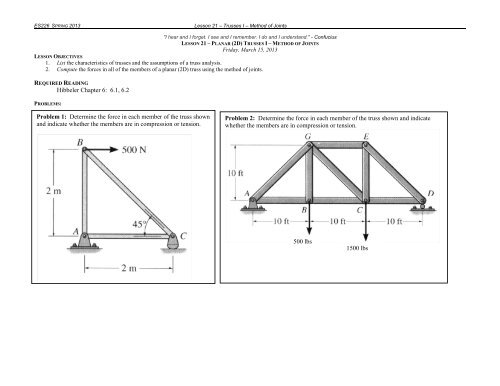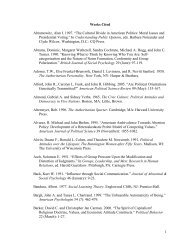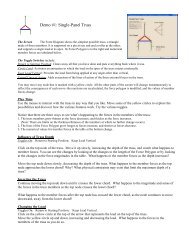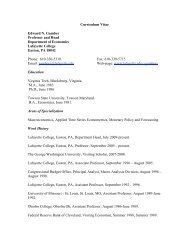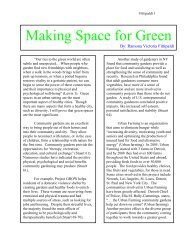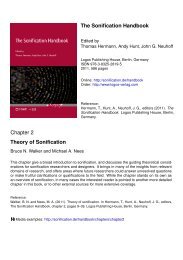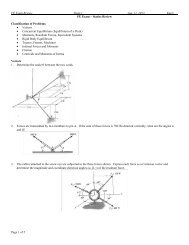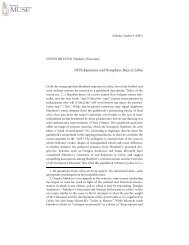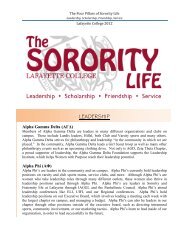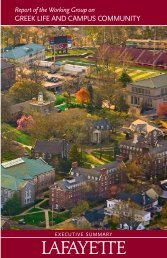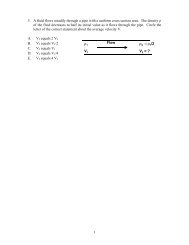Hibbeler Chapter 6: 6.1, 6.2 Problem 2 ... - Sites at Lafayette
Hibbeler Chapter 6: 6.1, 6.2 Problem 2 ... - Sites at Lafayette
Hibbeler Chapter 6: 6.1, 6.2 Problem 2 ... - Sites at Lafayette
- No tags were found...
You also want an ePaper? Increase the reach of your titles
YUMPU automatically turns print PDFs into web optimized ePapers that Google loves.
ES226 SPRING 2013 Lesson 21 – Trusses I – Method of Joints"I hear and I forget. I see and I remember. I do and I understand." - ConfuciusLESSON 21 – PLANAR (2D) TRUSSES I – METHOD OF JOINTSFriday, March 15, 2013LESSON OBJECTIVES1. List the characteristics of trusses and the assumptions of a truss analysis.2. Compute the forces in all of the members of a planar (2D) truss using the method of joints.REQUIRED READING<strong>Hibbeler</strong> <strong>Chapter</strong> 6: <strong>6.1</strong>, <strong>6.2</strong>PROBLEMS:<strong>Problem</strong> 1: Determine the force in each member of the truss shownand indic<strong>at</strong>e whether the members are in compression or tension.<strong>Problem</strong> 2: Determine the force in each member of the truss shown and indic<strong>at</strong>ewhether the members are in compression or tension.500 lbs1500 lbs
ES226 SPRING 2013 Lesson 21 – Trusses I – Method of JointsHOMEWORK (Due Next class day)1. Use the method of joints to determine the forces in each member of the truss and clearly st<strong>at</strong>e whether each is in tension orcompression.2. Use the method of joints to determine the forces in each member of the truss and clearly st<strong>at</strong>e whether each is in tension orcompression.


